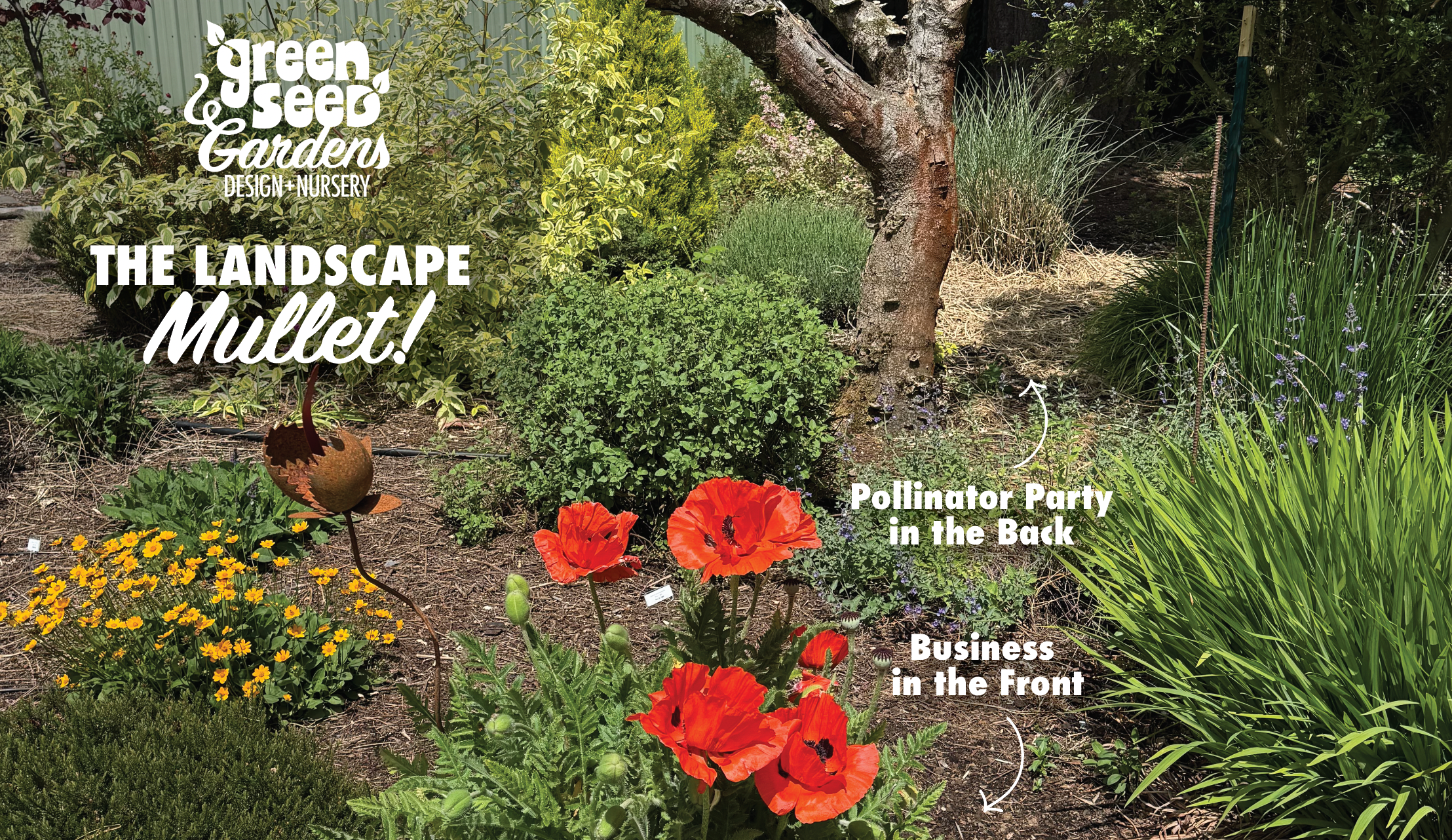
Mullets, But Make It Ecological: A Fresh Take on Yard Maintenance
Our first open garden is just a few weeks away, and things are buzzing—literally and figuratively.
To be honest, we’re scrambling a bit to get everything tidied up. We’ve been cutting back the last of the perennials, getting ready for visitors, and thinking about how we can showcase not just beauty, but biodiversity.
One simple practice we’ve leaned into over the last few years is Chop & Drop—cutting back perennials and leaving the plant debris in place to break down naturally. (If you missed our post on that, we’ve got you covered.) It’s a low-effort way to build soil, hold moisture, and support pollinators and beneficial bugs.
But we get it—sometimes you need things to look a little cleaner, especially near the house or in an HOA.
Enter: the Landscape Mullet. Business in the front, pollinator party in the back.
Yes, it’s exactly what it sounds like: business in the front, pollinator party in the back.
This strategy is a great way to balance aesthetics and ecology. Keep the front-facing areas neat—trimmed edges, fresh mulch, and cleaned-up plantings. But in the less visible spaces—behind shrubs, near the back fence, or under trees—you let the wild things happen. Leave the stems, scatter the clippings, and let brush/stick piles be.
Our friend Ariel is a great example. She lives in an HOA and wanted to create more habitat without rocking the boat. The Landscape Mullet was the perfect solution. She kept the more visible, front-facing areas crisp and “businesslike,” while using every bit of plant material to fuel a pollinator party in the back. No yard waste bins required—and no eyebrows raised by the neighbors.
So why are we doing this??? Here’s why it matters:
🌱 That plant debris acts as free mulch—holding moisture, smothering weeds, and feeding the soil.
🦋 It offers shelter and overwintering spots for native bees, beetles, butterfly larvae, and more.
🪱 As it decomposes, it supports a thriving underground ecosystem—worms, fungi, microbes—all working to nourish your plants.
With a Landscape Mullet, you’re not just maintaining a yard—you’re building habitat, supporting restoration, and helping pollinators thrive. Brush piles, stem stubble, and layered debris from perennial cutbacks provide crucial food and habitat for a wide range of beneficial insects and creatures.


